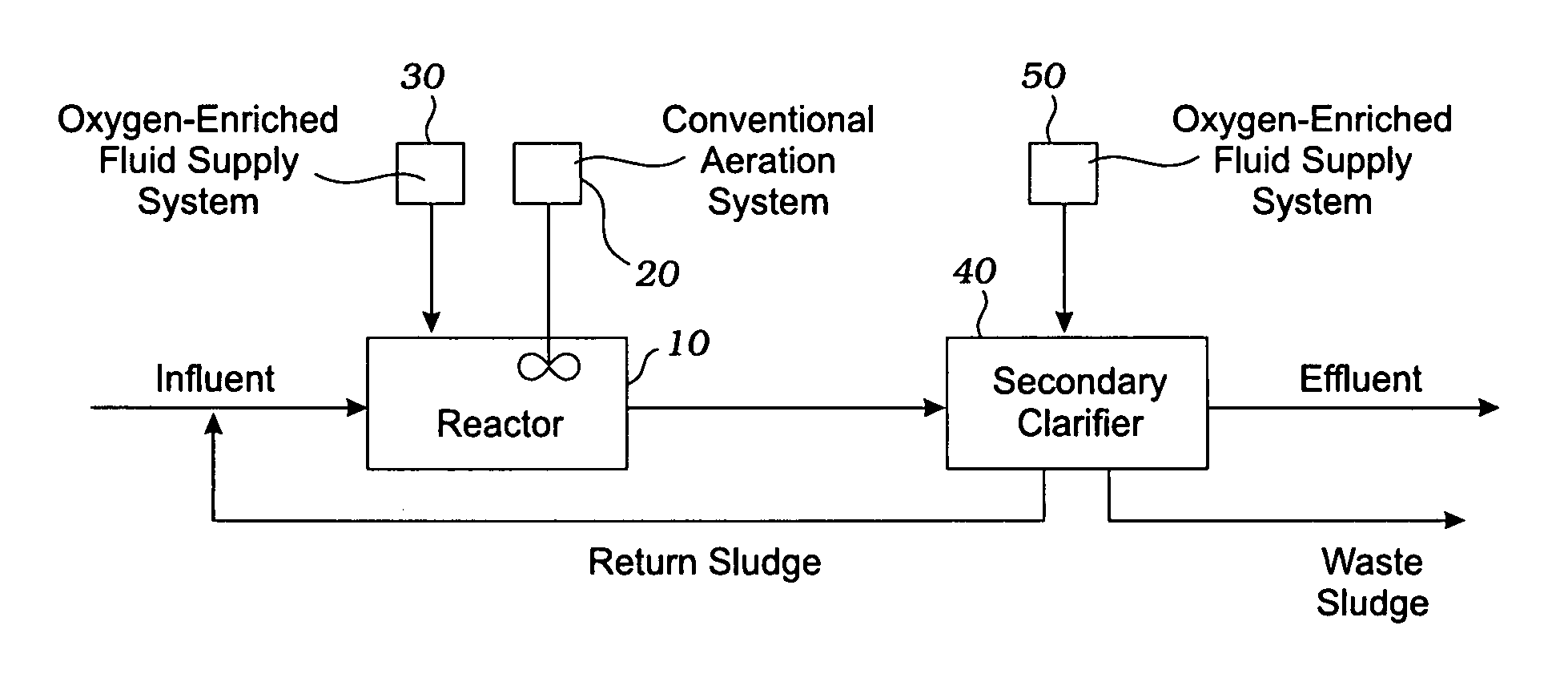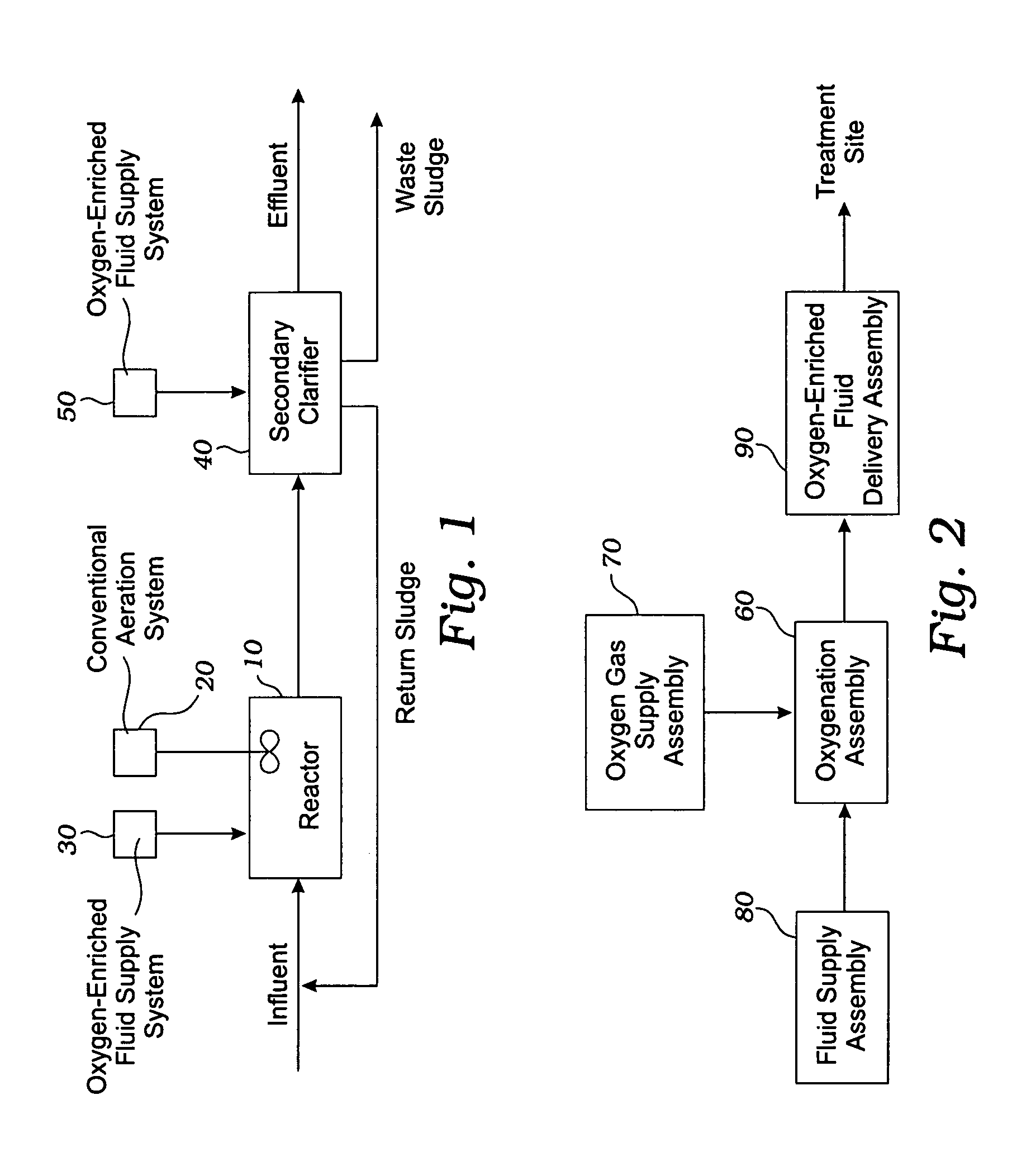Apparatus for oxygenating wastewater
a technology of oxygenating apparatus and wastewater, which is applied in water cleaning, multi-stage water/sewage treatment, separation processes, etc., can solve the problems of contaminating the water supply, affecting the oxygenation effect of wastewater, so as to achieve convenient maintenance or increase the oxygenation effect at the site, simplify the assembly, and simplify the cleaning
- Summary
- Abstract
- Description
- Claims
- Application Information
AI Technical Summary
Benefits of technology
Problems solved by technology
Method used
Image
Examples
Embodiment Construction
[0039]The description below illustrates certain specific embodiments or forms that depict various aspects of the present invention. For the sake of clarity, not all features of an actual implementation are described in this specification. It should be appreciated that in connection with developing any actual embodiment of the present invention many application-specific decisions must be made to achieve specific goals, which may vary from one application to another. Further, it should be appreciated that any such development effort might be complex and time-consuming, but would still be routine for those of ordinary skill in the art having the benefit of this disclosure.
[0040]For the sake of clarity and convenience, the various embodiments are described herein in the context of applications generally involving municipal wastewater treatment, including treatment of CSOs, SSOs, and storm water discharges. However, the present invention may also be useful in other applications, such as ...
PUM
| Property | Measurement | Unit |
|---|---|---|
| Diameter | aaaaa | aaaaa |
| Capillary wave | aaaaa | aaaaa |
Abstract
Description
Claims
Application Information
 Login to View More
Login to View More - R&D
- Intellectual Property
- Life Sciences
- Materials
- Tech Scout
- Unparalleled Data Quality
- Higher Quality Content
- 60% Fewer Hallucinations
Browse by: Latest US Patents, China's latest patents, Technical Efficacy Thesaurus, Application Domain, Technology Topic, Popular Technical Reports.
© 2025 PatSnap. All rights reserved.Legal|Privacy policy|Modern Slavery Act Transparency Statement|Sitemap|About US| Contact US: help@patsnap.com



